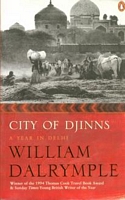Title: The End of Science –
Facing the Limits of Knowledge in the Twilight of the Scientific Age
Author: John Horgan
Publisher: Abacus,
2009 (First published 1996)
ISBN: 978-0-349-10926-8
Pages: 281
John Horgan was a senior writer at
Scientific American for several years. With an impressive resume of summing up
and balancing scientific literature, he moves in to the field with a sizeable
contribution from his own pen. Horgan places before the reader the essence of
what he has learned reading through all kinds of varied knowledge put forth
through the pages of the venerable scientific journal. This book is a
collection of wisdom gleaned from interviews with prominent academicians in the
respective fields like physics, evolutionary biology, chaos theory and others.
Science made the modern human
society. It gave durable insights into the nature of things. In fact, the
author wonders whether we are reaching or have reached the ultimate frontiers
of science and whether we will soon discover what is there to discover and what
the direction science would be taking in the new millennium. Pure science,
which is the quest for knowledge about what we are and where we come from, has
entered an era of diminishing returns. The era of great inventions or discoveries
are long past. Nothing comparable to the theory of gravity, natural selection,
relativity or quantum mechanics are likely to adorn the walls of future
science, Horgan argues. Science’s greatest drawback is its past success. Like
the economists say, returns expected of investment in science is diminishing at
a fast rate. Public funds may not last if such diminishing returns persist.
Nothing illustrates better the
apprehension that the end is near as in physics. He interviewed noted
physicists like Steven Weinberg and philosophers like Feyerabend and concludes
that the scholars share the gloom caused by reaching at the ‘Theory of
Everything’, or the final theory, or the Answer. After it is discovered
(or invented, depending on how you view it), there would be nothing more for
theoretical physics to ponder over. As a suggestion about the nature of the
final theory, he proposes superstrings, an idea which gained much prominence in
the 90s, but soon proved to be untestable with current technology. Cosmology is
also beset with problems. Horgan elaborates on Fred Hoyle, the noted physicist
who followed maverick ideas a bit too deep. Hoyle opposed the big bang theory,
it was in fact his coinage, to make fun of the theory. This is a major issue
with Horgan and his book. Whenever a chance presents itself, the author goes
after long discredited scientists whose ideas verged on the crazy. In the end,
the era around 2000 may appear to be the golden era of cosmology. As more data
flood in the years to come, it may become more like botany, a vast collection
of empirical facts only loosely bound by theory.
Evolutionary biology is the field
where the practitioners seem to have reached the consensus that the most basic
ideas about how life evolved has been successfully resolved. Darwinist theory
of evolution and natural selection has withstood the test of time and new ideas
like no scientific theory has ever done. Even though modern scientists like
Stephe Jay Gould criticizes Darwin, they don’t dare to claim that Darwin was
wrong. The most the credible opponents can come up with is that the theory is
incomplete. However, science has still to do a lot to explain how life
originated in the first place. Chaos theory is another branch whose growth is
stunted due to the lack of perceptible breakthroughs either theoretically or
empirically. They have created some potent metaphors: the butterfly effect,
fractals, artificial life, the edge of chaos and self-organized criticality.
That’s about the size of it all.
We would be astonished to see a
serious science journalist speculating about the end of science already
achieved when in fact a whole slew of discoveries are just beyond the horizon.
This brings to mind the consensus among leading physicists in the 19th
century that physics will be over by about 1900. With the benefit of hindsight,
we should not fall in such a self-congratulating honeytrap. Author’s selection
of experts is not rational. Introducing Stuart Kauffman as the biochemist who
is a radical challenger of Darwin is a case in point like “Kauffman began to
suspect that Darwin’s theory of evolution was seriously flawed, in that it
could not account for the seemingly miraculous ability of life to appear and
then to perpetuate itself in such marvelous ways” (p.132). Wow! The two
magical words, miraculous and marvelous appearing in one sentence
and you still call it scientific?
The contents are a little
outdated, being published in 1996. Nanotechnology, which would obviously
present an opportunity to reap great benefit has not had any place in Horgan’s
narrative. He maintains a disdainful attitude to technology as a whole. Many
parts of the book are plain boring. Readers would be happy to see the end of
the book, rather than the end of science.
On the other hand, there are
certain passages in the work which are illuminating examples of the supremely
interesting and humorous aspects of the journalist in Horgan. Descriptions of
the interviewees and their attitudes enhance the author’s stature as a
journalist in no uncertain terms.
Rating: 2 Star




















































